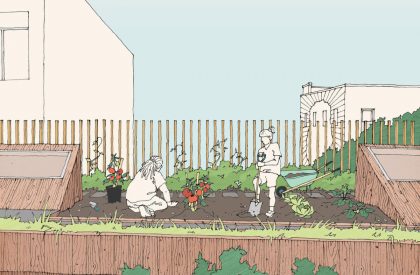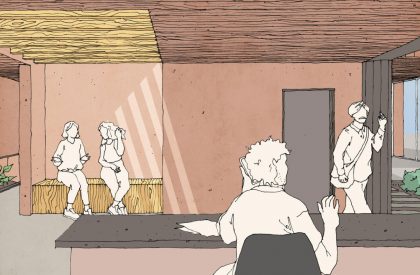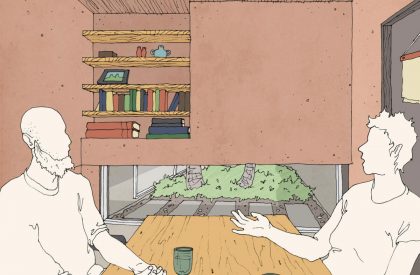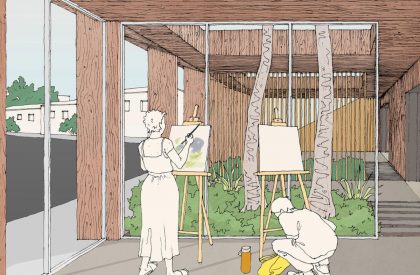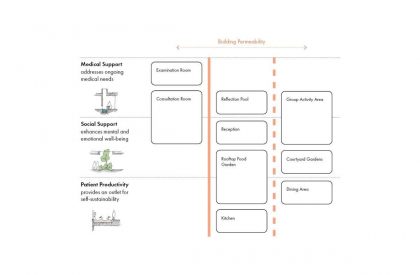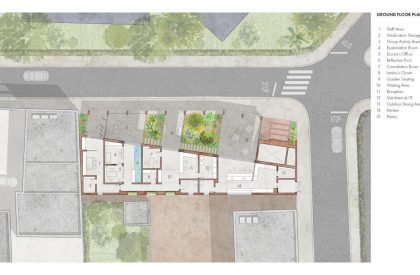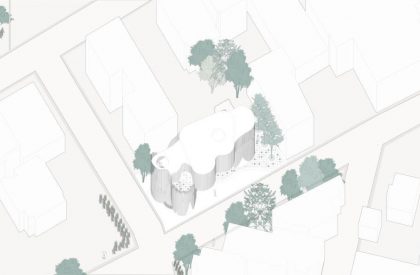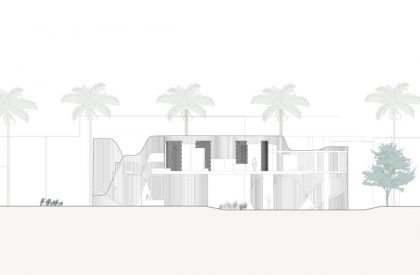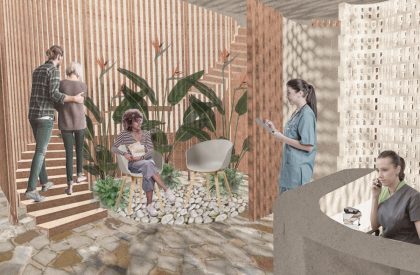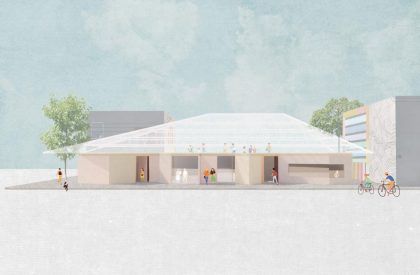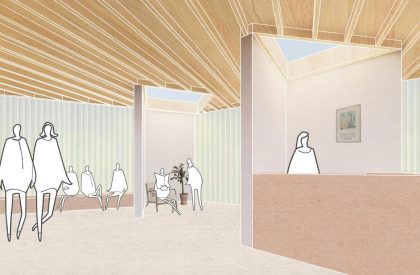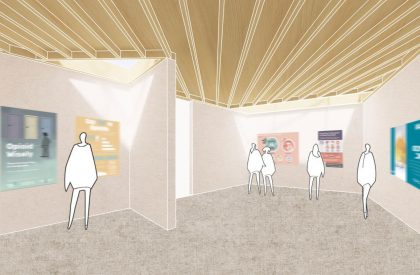Announcement
The goal of Emotions, Architecture, Opioids is to design a methadone medication unit located in Venice, Los Angeles. Proposals should address the stigma surrounding opioid dependency: in addition to administering methadone, the medication unit and its setting should offer an environment that is appealing regardless if you struggle with OUD or not.
1st Prize
Here, In Our Backyard by Hyjnid Metaj and Elizabeth Yeoh
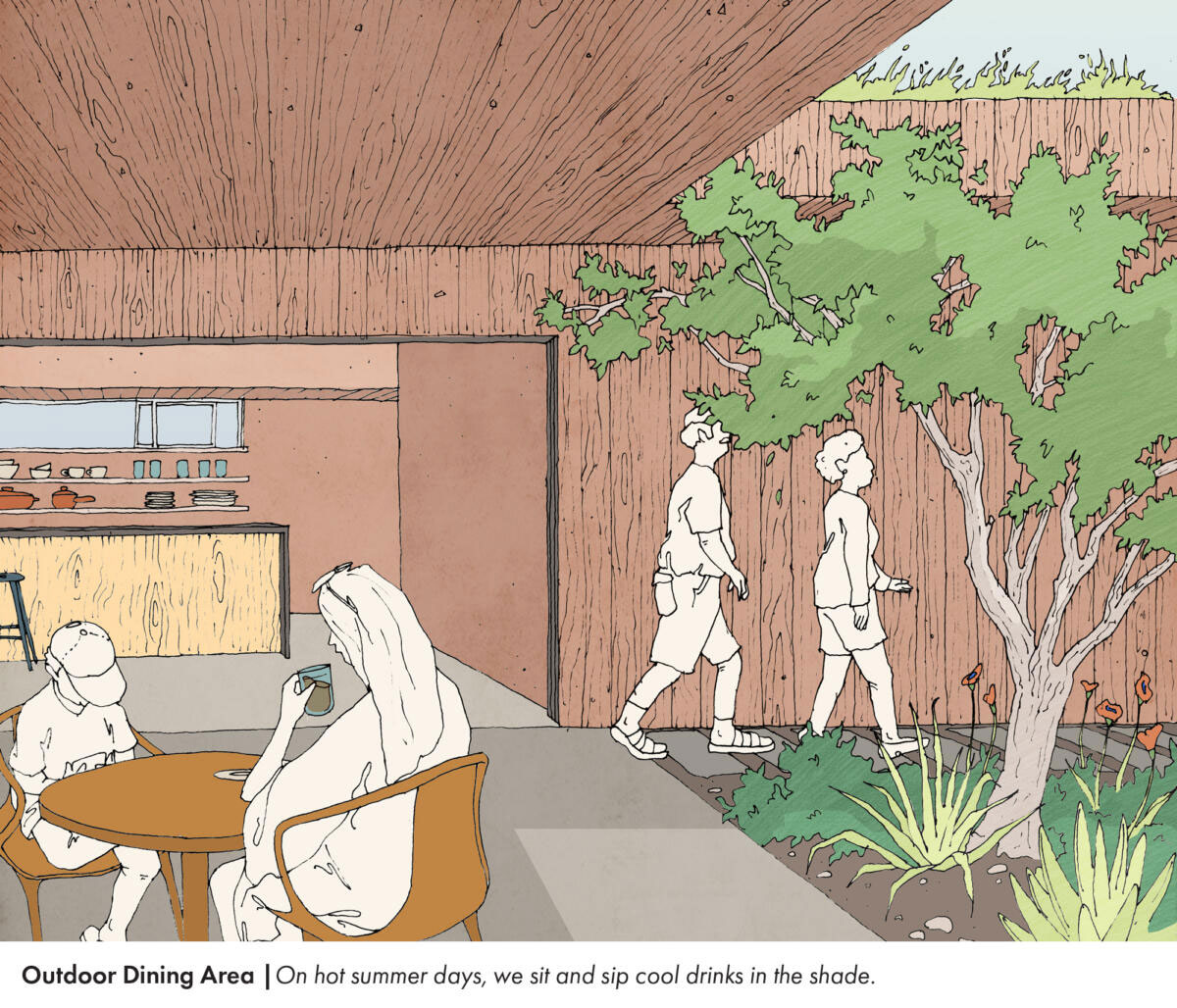
Substance addiction treatment centres are often opposed due to a refusal to claim responsibility for the “other”. Recovery is not possible without empathy. This requires us to subvert the assumed ‘privacy’ of such treatment spaces in order to reveal its functions. Our project sees the methadone unit as an extension of outdoor public space — a bridge between OUD patients and the Venice-Oakwood community. Landscaping is interwoven throughout the building to reinforce treatment by inviting patients and the public in. By rethinking the accessibility and visibility of clinical space, the methadone unit becomes a stage for encounter, understanding, and healing.
The process of recovery is facilitated by three forms of treatment which are supported each by an integrated landscape: Medical Support, Social Support, and Patient Productivity. Medical Support is provided through the clinic, which addresses the physical and mental well-being of the patients. Cantered within the medical support space, a reflection pool induces a tranquil meditative environment. Social Support is delivered through group activities intended to foster allyship between current patients, recovered addicts and the greater community. Social activities are screened by native plant gardens, which provide a shaded canopy for large gatherings. Patient Productivity concerns the employment and outreach opportunities available to patients at the rooftop food garden and kitchen. Long term, patients can gain valuable experience and move on to mentorship roles as they progress through their treatment.
2nd Prize
Common Ground by Cindy Nachareun, Melissa Amodeo, Natalie Sandelli and Vivian Ton

Common Ground addresses ways in which individuals and the communities they inhabit can begin to heal together from the effects of addiction. The common narrative around addiction demonizes those who have fallen into it, leaving very little space for compassion and healing to happen. How can a person learning to recover and cope receive the necessary help they require while the community simultaneously educates themselves about the realities of drug addiction? This centre acts as an anchor to mediate both sides, utilizing the history of arts in Venice and the ritual of making to reframe the act of receiving methadone and regular therapy visits.
Ritual becomes integrated in all elements of the architecture, with the aim of providing modes of healing for all members of the surrounding community: a space for rebirth, renewal, and revelations. By introducing mixed programming onto the site, overlapping spaces act as portals of interaction between the community and client, helping to create a strong interpersonal foundation for future growth. The breeze blocks, typical of Californian architecture, is interpreted through the program to mediate between perceptions of privacy, safety, exposure, and personal connection. Users of the space may address issues surrounding their own health, or confront inherent biases developed towards addiction and mental health.
The ceramic studio acts as a social enterprise that links the history of Venice to all members of the community, remediating the past. Lastly, the center performs a time-based architecture that shows the rituals of use over time through the outdoor mosaic feature and memorial garden, where reclaimed clay tiles made by participants through the program become the shared ground for social rehabilitation.
3rd Prize
A Roof, A Fusion, A Cure by Yiran Ma
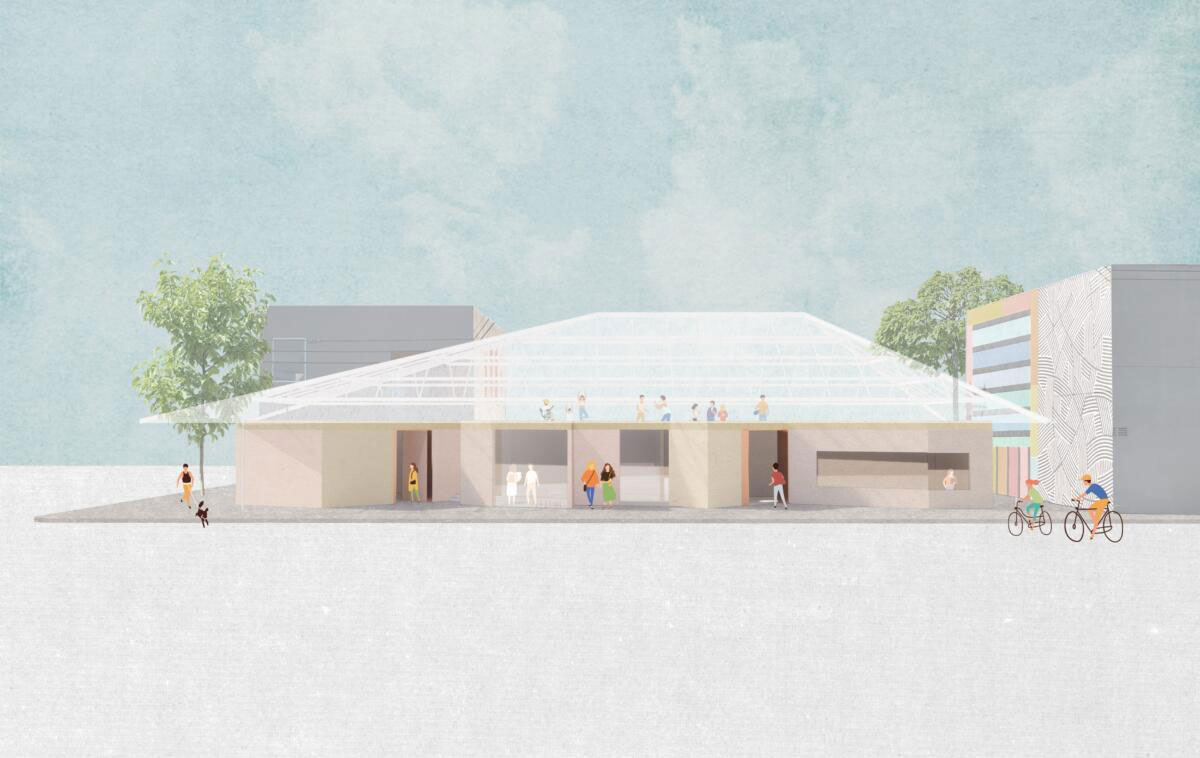
Inclusivity
Bringing a methadone clinic into a neighbourhood can be troublesome. It is risky, it is scary, it is controversial. It can be easily misunderstood as a “gathering location for the addicts”, a “place to ask your children to avoid”, or even a “stain that ruins the entire neighbourhood”. Part of the stigma of addiction comes from the exclusivity of the medication-assisted treatment, and for the majority of society, it remains unknown. The design is focused on opening the clinic to the public. A welcoming environment will be designed for patients to feel warm, intimate, and inclusive. The huge roof and the free-standing walls make the building stand out in the neighbourhood, intending to attract visitors and stimulate their curiosity to explore the building.
Engagement
While everyone is welcomed to the clinic, on the ground floor separate entrances are set for the patients and the visitors. In the clinic, the waiting area is designed as open with a great amount of natural light brought into space, providing the patients with a comfortable environment to sit down and communicate with each other. The free-standing walls separate the space with more possibilities as different levels of privacy can be achieved for interviews and consultations. On the east side of the building, a small gallery is designed for exhibitions on the opioid epidemic and the MAT program, which is open permanently to the public.
Awareness
The big roof, in a metaphorical meaning, is a shelter that equally respects and protects everyone. The radiation of this awareness should be brought more profoundly into the city. While two types of space are separated on the ground floor, the second floor is open as a community center. The translucent semi-finished plastic panels make the rooftop filled with natural light yet projected from UV radiation. Weekly lectures and events will be held to enhance the awareness of the opioid epidemic, the MAT program, and the greater context of public health.
Read jury comments, honourable mention and more information here.
Save



